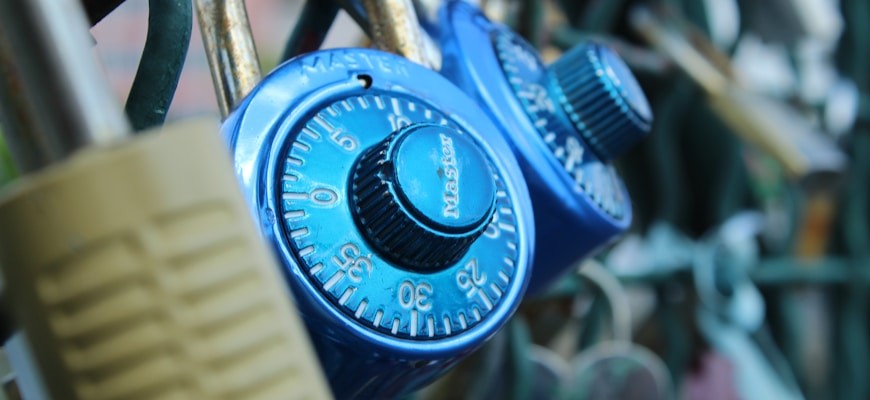- Understanding Risk-Weighted Assets: A Comprehensive Overview
- The Role of Tokenization in Enhancing Compliance Efforts
- Best Practices for Implementing Tokenization in Financial Institutions
- Navigating Regulatory Frameworks: Ensuring RWA Compliance
- Case Studies: Successful Tokenization Strategies in Action
- Future Trends: The Evolving Landscape of RWA Compliance and Tokenization
Understanding Risk-Weighted Assets: A Comprehensive Overview
Risk-Weighted Assets (RWA) are a crucial concept in the financial landscape, particularly for institutions aiming to ensure compliance with regulatory standards. Understanding RWAs is essential for effective risk management and capital allocation. The calculation of RWAs involves assessing the risk associated with various assets, taking into account the likelihood of default and the potential impact on financial stability.
In the context of tokenization, ensuring RWA compliance becomes increasingly significant. Tokenization refers to the process of converting assets into digital tokens, which can facilitate easier trading and liquidity. However, this innovation introduces unique challenges for RWA assessment, as the underlying assets may carry different risk profiles compared to their traditional counterparts.
- Identification of Assets: Proper identification of tokenized assets is critical for accurate RWA calculation. Each asset must be evaluated based on its risk category.
- Risk Assessment: Conducting a thorough risk assessment of tokenized assets ensures that potential risks are recognized and measured appropriately.
- Regulatory Compliance: Adhering to regulatory requirements is essential for institutions handling tokenized assets. Compliance with RWA guidelines mitigates risks related to capital adequacy.
- Data Management: Effective data management practices enhance the ability to track and analyze tokenized assets, contributing to more precise RWA calculations.
- Continuous Monitoring: Implementing robust monitoring systems enables ongoing assessment of the risk associated with tokenized assets, ensuring that RWAs remain compliant over time.
As financial institutions embrace tokenization, a comprehensive understanding of RWAs becomes essential. The dynamic nature of the tokenized assets market necessitates a proactive approach to RWA compliance. By implementing best practices, institutions can effectively navigate the complexities of risk assessment while capitalizing on the benefits of tokenization.
In conclusion, ensuring RWA compliance in the realm of tokenization requires a multifaceted strategy. Institutions must prioritize risk identification, comprehensive assessment, and regulatory adherence to maintain financial integrity. With a focus on these aspects, organizations can successfully integrate tokenization into their operations while safeguarding their risk-weighted assets.
The Role of Tokenization in Enhancing Compliance Efforts
Tokenization plays a crucial role in enhancing compliance efforts within the realm of Real World Assets (RWA). By converting sensitive information into digital tokens, organizations can significantly reduce the risks associated with data breaches and non-compliance. This innovative approach not only secures data but also streamlines regulatory processes, making compliance more efficient and effective.
One of the primary benefits of tokenization is its ability to simplify the management of sensitive information. With tokenized data, organizations can maintain compliance with various regulations, such as GDPR and CCPA, while minimizing the potential for data exposure. This is achieved through the use of cryptographic techniques that ensure only authorized parties can access the original data, thereby enhancing overall security.
Furthermore, tokenization aids in creating transparent audit trails. This transparency is vital for regulatory bodies and can significantly enhance an organization’s credibility. By keeping detailed records of tokenized transactions, companies can demonstrate compliance with legal requirements and swiftly respond to any inquiries from regulators.
- Improved data security through the use of tokens
- Streamlined compliance processes, reducing operational costs
- Enhanced auditability, providing clear records for regulatory purposes
- Minimized risk of data breaches, protecting sensitive information
- Facilitated adherence to global regulations, bolstering trust with stakeholders
In addition, the integration of tokenization within an organization’s compliance framework can lead to more adaptive and resilient business practices. As regulations evolve, tokenization allows for easier adjustments to data handling processes, ensuring ongoing compliance without significant resource investment. This agility is essential in today’s dynamic regulatory landscape.
Overall, leveraging tokenization not only enhances compliance efforts but also positions organizations favorably in the competitive market. The combination of improved security, regulatory adherence, and operational efficiency makes tokenization an indispensable strategy for businesses aiming to ensure RWA compliance.
Best Practices for Implementing Tokenization in Financial Institutions
Tokenization is a critical component in ensuring compliance with risk-weighted asset (RWA) requirements for financial institutions. Implementing effective tokenization practices can significantly enhance data security and regulatory adherence. To achieve optimal results, financial institutions should follow a series of best practices.
- Establish Clear Objectives: Defining the specific goals for tokenization helps align compliance efforts with overall business strategies. This clarity ensures that the tokenization process effectively addresses RWA concerns.
- Conduct a Comprehensive Risk Assessment: A thorough evaluation of current data security measures and vulnerabilities allows institutions to identify areas that require tokenization. Understanding the risk landscape is essential for prioritizing tokenization initiatives.
- Choose the Right Tokenization Method: Different tokenization techniques, such as format-preserving encryption or non-deterministic tokenization, offer unique benefits. Selecting the appropriate method is crucial for balancing security and usability.
- Integrate with Existing Systems: Seamless integration of tokenization solutions with current IT infrastructure is vital. This ensures that tokenized data flows smoothly through existing channels, maintaining operational efficiency while enhancing compliance.
- Implement Strong Access Controls: Restricting access to tokenized data is essential for safeguarding sensitive information. Robust access control mechanisms prevent unauthorized users from interacting with tokenized assets.
- Regularly Review and Update Tokenization Policies: Continuous monitoring and adjustment of tokenization strategies are necessary to adapt to evolving regulatory requirements and security threats. Staying informed about industry changes is crucial for maintaining compliance.
- Educate Staff on Tokenization Practices: Training employees on the importance of tokenization and best practices fosters a culture of compliance. Knowledgeable staff can better support the institution’s efforts in managing RWA-related risks.
By following these best practices, financial institutions can effectively implement tokenization, ensuring compliance with RWA requirements while enhancing data security. A strategic approach to tokenization not only protects sensitive information but also reinforces regulatory adherence, ultimately contributing to a more resilient financial ecosystem.
Navigating Regulatory Frameworks: Ensuring RWA Compliance
Navigating the regulatory frameworks surrounding Real World Asset (RWA) compliance is essential for organizations seeking to tokenize their assets. Compliance with RWA regulations ensures that tokenized assets adhere to legal standards, safeguarding both the issuer and investors. Understanding the various regulatory requirements is crucial for achieving successful tokenization without legal hitches.
- Research Applicable Regulations: It is vital to thoroughly research the regulations governing tokenized assets in the relevant jurisdictions. This includes understanding local laws, international regulations, and compliance frameworks that impact RWA.
- Engage Legal Experts: Consulting with legal professionals who specialize in financial regulations can provide valuable insights. They can help navigate complex legal landscapes, ensuring that all aspects of RWA tokenization are compliant.
- Implement Robust Compliance Procedures: Establishing comprehensive compliance procedures is necessary for monitoring adherence to regulatory standards. These procedures should be regularly reviewed and updated to reflect any changes in the regulatory environment.
- Utilize Technology Solutions: Leveraging technology can streamline compliance efforts. Utilizing blockchain technology and smart contracts can enhance transparency and accountability in the tokenization process, ensuring alignment with RWA regulations.
- Conduct Regular Audits: Performing regular audits of RWA compliance measures can help identify potential gaps or weaknesses. These audits should focus on both operational and regulatory compliance to ensure ongoing adherence to the required standards.
In conclusion, ensuring RWA compliance through effective navigation of regulatory frameworks is critical for the success of tokenization initiatives. By focusing on research, legal expertise, robust procedures, technology solutions, and regular audits, organizations can mitigate risks and enhance their compliance posture. This proactive approach fosters trust among investors and stakeholders, ultimately contributing to the long-term viability of tokenized assets.
Case Studies: Successful Tokenization Strategies in Action
Tokenization has emerged as a crucial strategy for ensuring compliance with Real-World Assets (RWA) regulations. By implementing effective tokenization strategies, organizations can achieve transparency, security, and efficiency in asset management. Several successful case studies illustrate how companies have navigated the complexities of RWA compliance through innovative tokenization practices.
- Case Study 1: Real Estate Tokenization – A leading real estate firm utilized tokenization to streamline property transactions. By issuing digital tokens for ownership shares, the firm enhanced liquidity and facilitated fractional ownership, ensuring compliance with local regulations.
- Case Study 2: Art Asset Tokenization – An art investment platform launched a tokenization initiative that enabled investors to buy shares in high-value artworks. This approach not only democratized access to art investments but also adhered to compliance guidelines, fostering trust and regulatory alignment.
- Case Study 3: Commodity Tokenization – A commodities trading company developed a tokenization model for precious metals. By creating a digital ledger for each tokenized asset, the company maintained compliance with industry standards while improving transaction speed and reducing costs.
These examples showcase how diverse sectors can leverage tokenization to ensure RWA compliance. Through strategic implementation, organizations can not only meet regulatory demands but also unlock new opportunities for growth and innovation. The success of these tokenization strategies highlights the importance of staying informed about best practices and evolving regulatory landscapes.
In conclusion, the exploration of successful tokenization strategies provides valuable insights for businesses aiming to achieve RWA compliance. By learning from these case studies, stakeholders can better understand the practical applications of tokenization and the significant advantages it offers in the context of regulatory adherence.
Future Trends: The Evolving Landscape of RWA Compliance and Tokenization
The landscape of Real World Asset (RWA) compliance is rapidly evolving, driven by technological advancements and regulatory changes. As tokenization continues to gain momentum, understanding future trends becomes crucial for businesses aiming to ensure RWA compliance. Compliance frameworks are expected to become more standardized, facilitating smoother integration between traditional financial systems and decentralized platforms.
- The rise of decentralized finance (DeFi) is reshaping RWA compliance, necessitating innovative approaches to regulatory adherence.
- Increased collaboration between regulators and the blockchain industry is likely, fostering a shared understanding of compliance requirements for tokenized assets.
- Emerging technologies, such as artificial intelligence and machine learning, are set to play a pivotal role in monitoring compliance in real-time.
- Tokenization of assets is expected to become more mainstream, leading to enhanced transparency and traceability, which are essential for RWA compliance.
- Institutional adoption of tokenized assets will drive the development of best practices, ensuring robust compliance mechanisms are in place.
Furthermore, the integration of smart contracts in tokenization processes is anticipated to streamline compliance checks, reducing the manual workload associated with RWA compliance. As regulatory bodies continue to refine their approaches, businesses must stay ahead of the curve by embracing these upcoming trends.
In conclusion, the evolving landscape of RWA compliance and tokenization presents both challenges and opportunities. By proactively adapting to these changes, organizations can ensure they meet compliance requirements while capitalizing on the benefits of tokenization. Staying informed about trends will be essential for maintaining a competitive edge in the rapidly changing financial ecosystem.










I found the article on Ensuring RWA Compliance through tokenization very informative. As someone new to the concept, I appreciate the detailed explanation provided. Can you share more examples of how tokenization is being used in real estate transactions?
Tokenization is definitely the future of real estate transactions. I have personally seen the benefits of using tokens to represent real estate assets. Could you elaborate on the security measures in place to ensure compliance with RWA guidelines?
I have been following the developments in tokenization of real estate for a while now. The best practices mentioned in the article are crucial for ensuring compliance. How can individual investors get involved in tokenized real estate projects?
Tokenization is revolutionizing the real estate industry. The article provides a great overview of best practices for compliance. Can you explain the role of smart contracts in ensuring transparency and security in tokenized real estate transactions?